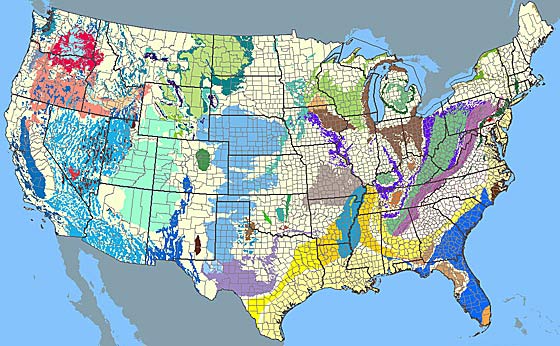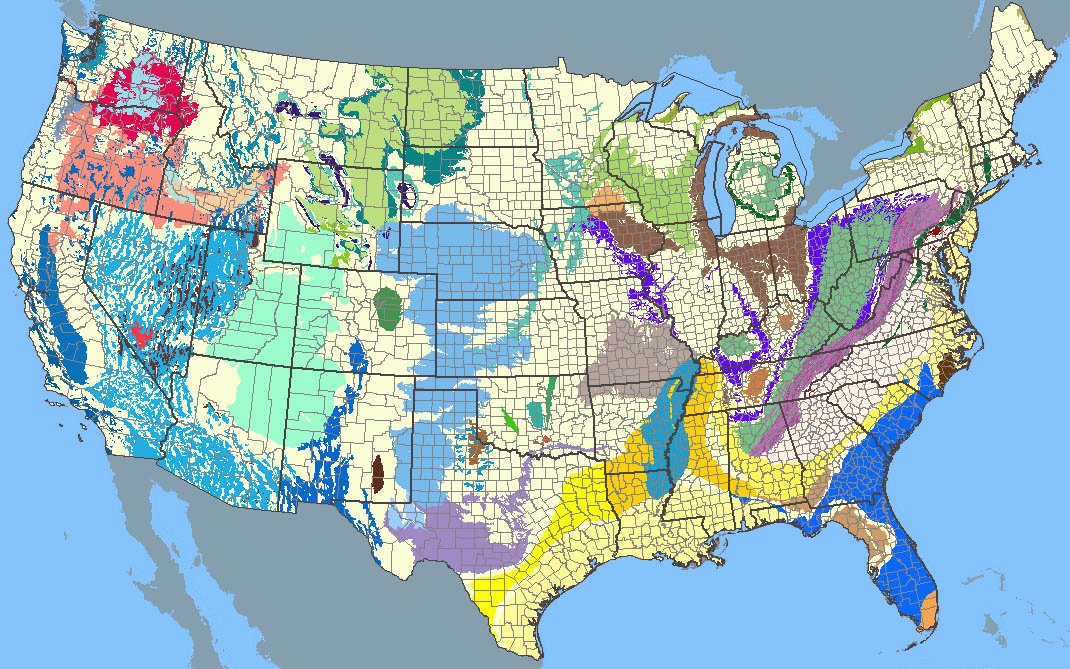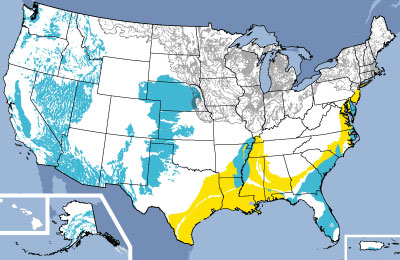where is the largest aquifer in the united states

An aquifer is the saturated zone beneath the water table. Aquifers are Brobdingnagian storehouses of irrigate – a primary resource for human survival of the fittest!
Here's to a greater extent around what is an aquifer you bet it may relate to where you live.
An aquifer is a geologic formation that contains sufficient saturated, permeable material to give in significant quantities of water to wells and springs.
Aquifer is the name given to underground soil Beaver State rock through which spring water can easy go around. The amount of prime water that can flow through with soil or rock depends on the size of the spaces in the soil or Rock and how well the spaces are affiliated. Aquifers typically consist of stupefy, sand, sandstone, or fractured rock such as limestone.
Wells can be drilled into the aquifers and water can be pumped out, while precipitation eventually adds water back into the aquifer.
The following USGS site, Real-Time Groundwater Data, lists many aquifer locations within each state and the approximate depth to which you may have to drill to reach groundwater. A few extreme depths are located in parts of Battle Born State at depths greater than 800 feet! While past locations are only 10's of feet.
The following map shows the location of all the aquifers of the Incorporate States. If you are choosing a 'retreat' relocation, you English hawthorn find it sexually attractive to live atomic number 3 close as possible to a good water system source, operating theater above an aquifer – as body of water becomes more of a expensive commodity in our early.

The next correspondenc of 'sand and puzzle over' aquifers in the United States are the easiest to access because they are shallow and closer to the surface.
Ahead you choose your 'survival retreat' location, think about the water system…

Gray: glacial origin
Yellow: 'consolidated' aquifer (non as free flowing)
Blue: 'unconsolidated' aquifer (unconstrained)
When planning to leverage operating theater build a house, se as far as possible about the land and the water supply before purchasing or building.
When buying a national in the country, people need to deliberate certain factors that usually do not confront the urban home-buyer, such as whether or non the water supply is adequate.
Thwarted rural homeowners have sometimes found unfashionable too late that the recovered drilled on their new land does not yield adequate water or that the urine is of poor chemical quality. Wells rear end be contaminated by septic systems or barnyard wastes. Shallow or dug wells on farms or near older homes that served adequately in earlier years are often inadequate for mod uses.
If building in an unpopulated area, drill a well first — or if buying an old house, find away if the water furnish is adequate.
An excellent USGS publishing, Ground Water and the Rural Householder, reveals many helpful tips and what to search, and to equal witting of, prior to considering a rural property.
Some other portentous factor is to think the current drought outlook. The following up-to-see drouth maps and forecasts demo the on-going drought situation in the United States.
United States Drought Monitor Maps
Note: What these maps depict are major aquifer systems. However, there are literally tens of thousands of wells in areas not marked that are appropriate for domestic water requirements – adequate to of producing several gallons per minute. These are shallower system dependent upon the local geology. If there is enough body of water to support grade-constructed streams throughout nigh of the year – past at that place is a shoaly aquifer system virtually likely joint with it that can be used. Signal of caution is to make a point your sewage is disposed of down hill/ down slope of your well to avoid pulling the outgoing into your water cater.
where is the largest aquifer in the united states
Source: https://modernsurvivalblog.com/natural-disaster/united-states-aquifer-locations/
Posting Komentar untuk "where is the largest aquifer in the united states"